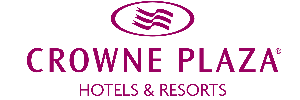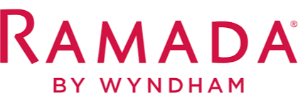For corporate organizations, quality and cost management in textile services are key priorities. This content provides strategic recommendations and practical steps tailored to professional operations. Industrial laundry processes aim to maintain hygiene standards while improving efficiency. Capacity planning in large-scale textile cleaning ensures balanced resource utilization. Supplier selection should consider fabric durability, stain removal methods, and maintenance processes. Long-term performance is strengthened through sustainable practices supported by textile management strategies. Actionable steps, prioritization criteria, and measurable targets help business owners and managers enhance results. The recommendations include cost control, quality assurance, process analysis, and reporting mechanisms, all designed to reduce risks and ensure sustainable implementation.
Enhancing Corporate Efficiency with Professional Textile Laundry Services
Increasing resource efficiency in corporate operations requires structured planning and disciplined execution. Textile management strategies must align with institutional goals and create strong links between field operations and reporting systems. Recommended practices include: 1) Defining supplier criteria and quality assurance parameters in contracts, 2) Optimizing washing capacity and scheduling for cost efficiency, 3) Maintaining machine performance through professional equipment care, 4) Reducing unnecessary replacement cycles by applying advanced stain removal and durability standards, and 5) Establishing monitoring, analytics, and continuous improvement culture. Integrating textile management strategies with operations and training programs enhances performance across the organization. Aligning resource allocation with measurable field feedback promotes efficiency and consistency in service delivery.
Automation and Labor Optimization in Washing Capacity Management
Integrating automation into washing capacity management reduces manual intervention and improves labor efficiency. Combining shift scheduling, machine data, and sensor integration allows precise coordination of breaks, setup times, and maintenance cycles. Automated control of stain removal and washing ensures stable quality while minimizing downtime. Textile management strategies help restructure staff training, supplier coordination, and performance evaluation. These measures improve textile durability and promote sustainable practices. Effective capacity planning directly impacts financial performance, reducing costs while maintaining service continuity. Clear definition of short-, mid-, and long-term goals is essential, while continuous reporting ensures strategic adaptability.
Cost and Performance Optimization with Industrial Cleaning Chemicals
Balancing cost and quality through industrial cleaning chemicals is crucial for institutional laundry operations. Product labels, performance metrics, and equipment compatibility must be carefully reviewed. Appropriate formulations improve stain removal efficiency and fabric resilience. Standardizing chemical efficiency criteria in supply chain management optimizes purchasing, storage, and rotation. Waste and environmental impact must also be considered. Integrated dosing systems reduce water and energy consumption while maximizing cleaning power. Regular quality checks and supplier evaluations further reduce maintenance costs and extend textile lifespan. Pilot projects with industrial cleaning chemicals validate performance before full deployment, ensuring sustainability and operational control.
Reducing Energy and Water Consumption through Textile Management Strategies
Energy and water conservation in textile management begins with optimizing washing machines, process control, and efficient washing formulas. Low-temperature cycles with the right chemical balance reduce energy usage measurably. Smart water management programs involving recycling and dosing help limit consumption. Maintaining hygiene while implementing sustainable practices lowers environmental impact and enhances institutional reputation. Decision-makers must define measurable energy and water goals, supported by consistent reporting and equipment maintenance schedules. Pilot collaborations with service providers verify efficiency and sustainability outcomes. Reduced resource consumption delivers both environmental and financial benefits.
Long-Term Operational Efficiency through Sustainable Cleaning Technologies
From a corporate perspective, sustainable cleaning technologies aim to achieve long-term operational efficiency. Investment priorities should consider total ownership cost, maintenance needs, and environmental impact. Integrated sensors enable real-time monitoring and predictive maintenance, minimizing downtime. Proper chemical combinations preserve textile strength and reduce replacement frequency. Including sustainability metrics in service contracts makes supplier performance measurable. Technologies such as water recycling, low-temperature systems, and chemical recovery deliver both compliance and cost savings. Training programs and standardized procedures maintain consistency, while ongoing measurement and reporting create continuous improvement loops that strengthen institutional flexibility and environmental responsibility.
























